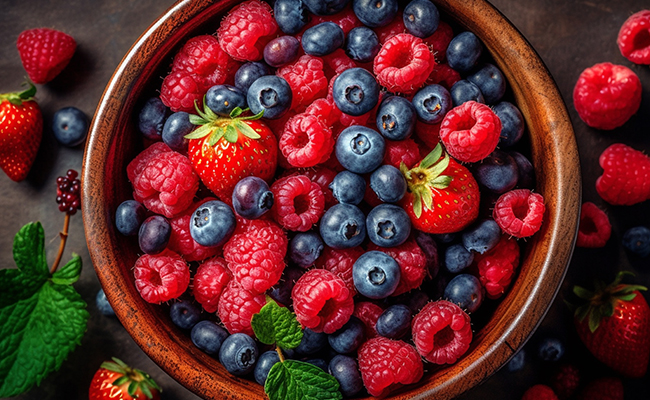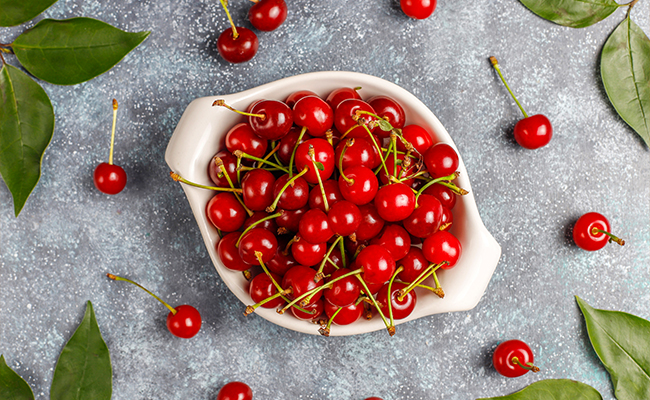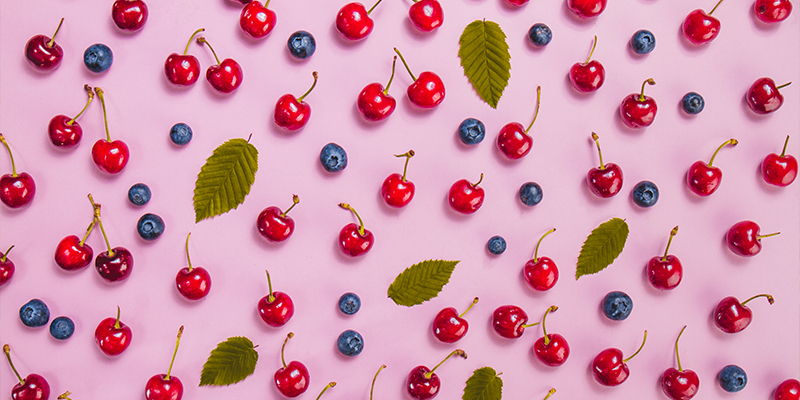At first glance, berries and cherries might seem like distant cousins from the same fruity family—both small, juicy, and often seen in desserts, jams, or smoothies. But when you take a closer look, you’ll find that they’re surprisingly different in botanical makeup, taste, texture, and even how they’re used in the kitchen.
If you’ve ever felt confused about this, you’re not alone. So, let’s break it down and explore the difference between berries and cherries, one delicious fact at a time.
All About Berries


Before diving into the difference between berries and cherries, let’s first uncover everything you need to know about these juicy favourites.
Definition
Botanically, a berry is a type of fruit that develops from the single ovary of a flower and typically contains multiple seeds. The entire ovary wall ripens into an edible pericarp. This structure means true berries include fruits you might not expect, like bananas, kiwis, and even grapes. Yes, you read that right—strawberries and raspberries aren’t true berries, but bananas are. The irony isn’t lost on botanists.
Examples
To understand what is a berry, it helps to look at the textbook examples:
-
True berries: Bananas, kiwis, grapes, tomatoes, and blueberries are included in this category.
-
Commonly called berries but not botanical berries: Strawberries, raspberries, and blackberries are classic examples of fruits that got mislabelled.
Key Features
These defining features set berries apart:
Seed Distribution: True berries generally have several seeds distributed evenly throughout their flesh. You’ll notice this clearly in tomatoes or grapes.
Skin and Pulp: Berries usually have a soft, often thin skin that encloses juicy pulp. The entire fruit—skin, flesh, and seeds—is typically consumed without the need for peeling or pitting.
Botanical Structure: Their defining feature is their origin—true berries come from a single ovary and contain no hard pit or stone. The ovary matures into a fully edible fruit, differentiating them from drupes like cherries or peaches.
Culinary Usage
Whether they’re technically berries or not, these fruits have earned a permanent place in kitchens worldwide. Berries are loved for their versatility and ability to complement both sweet and savoury profiles.
-
Breakfast staples: From granola-topped yoghurt to fluffy pancakes, berries are a favourite way to start the day thanks to their natural sweetness and bright acidity.
-
Desserts: Whether folded into pies and tarts or served fresh with cream, their vibrant colour and burst of flavour make them ideal for desserts.
-
Beverages: Berries are often used to infuse water, enhance cocktails, or flavour teas with a refreshing zing.
-
Snacking and nutrition: Eaten fresh, frozen, or dried, berries are rich in nutrients and packed with antioxidants, making them one of the healthiest go-to snacks.
In virtually every cuisine—from Indian to Mediterranean, Asian to Nordic—many types of berries are used for the visual appeal and textural balance they bring to a dish. Their characteristic tartness and juiciness can cut through richness or enhance lightness, depending on how they’re incorporated.
Keep these facts in mind as we move on to cherries next. It’ll make spotting the difference between berries and cherries a whole lot easier.
All About Cherries


Now, let’s shift focus and uncover the truth about cherries. Buckle up for a surprise—because they’re quite different from what you might have thought.
Definition
A cherry is a drupe—a fruit that contains a single seed (or stone) enclosed in a hard pit, surrounded by fleshy fruit. Unlike berries, drupes develop from a different ovary structure and have a more defined stone-fruit anatomy. Cherries grow on trees in temperate climates and belong to the Prunus genus, which also includes plums, apricots, and peaches.
Examples
When you hear the question, “What is a cherry?” you probably picture that classic red jewel atop a sundae. But there is much more to the story.
-
Sweet cherries: These are the kind you’d snack on straight from the bowl. Varieties like Bing, Rainier, and Lambert are known for their juicy, sugary flavour and deep red (or golden) hues.
-
Tart cherries: Often used in baking and preserves, these varieties—like Montmorency and Morello—offer a sharper flavour that balances beautifully with sugar or savoury pairings.
-
Wild and ornamental cherries: While types like the Black Cherry do produce edible fruit, others—like the Japanese Cherry Blossom—are primarily grown for their stunning flowers rather than their fruit.
Key Features
You will find these features in cherries:
-
Stone fruit structure: At the heart of every cherry is a single, hard pit. This distinguishes it from berries, which typically contain multiple small seeds.
-
Firm flesh: Cherries have a meatier texture compared to the soft juiciness of berries. Their bite feels more structured and substantial.
-
Flavour profile: Depending on the variety, cherries can be sugary sweet or puckeringly tart. Sweet cherries are often eaten raw, while tart ones are usually cooked.
-
Growth and habitat: Cherries grow on deciduous trees, not bushes or vines. These trees thrive in temperate climates and typically bloom with beautiful blossoms before bearing fruit.
Culinary Usage
In the culinary world, cherries are as versatile as they are vibrant.
-
Desserts: From Black Forest cake to rustic cherry pies and French clafoutis, cherries are a classic baking ingredient known for adding richness and colour.
-
Savoury pairings: Tart cherry sauces are often paired with roast duck, pork, or game meats, offering a tangy contrast to the richness of the dish.
-
Drinks: Cherries are used in everything from juice blends and smoothies to liqueurs and cocktails—the Manhattan being a classic example.
-
Preserved forms: Dried cherries, cherry jams, maraschino cherries, and even pickled cherries are popular across cuisines for extending the fruit’s shelf life and intensifying its flavour.
One notable difference between berries and cherries is that the latter requires pitting before eating or cooking. This added prep step makes them slightly more demanding in the kitchen.
Wrapping Up
Just because a few fruits end in “-erry” doesn’t mean they belong in the same category. There are far too many differences between berries and cherries to overlook. And understanding these distinctions isn’t about nitpicking—it’s about knowing what we’re actually eating, cooking with, or talking about. Hopefully, this blog has equipped you with a clearer understanding—and a fresh perspective on the fruits you thought you already knew.





